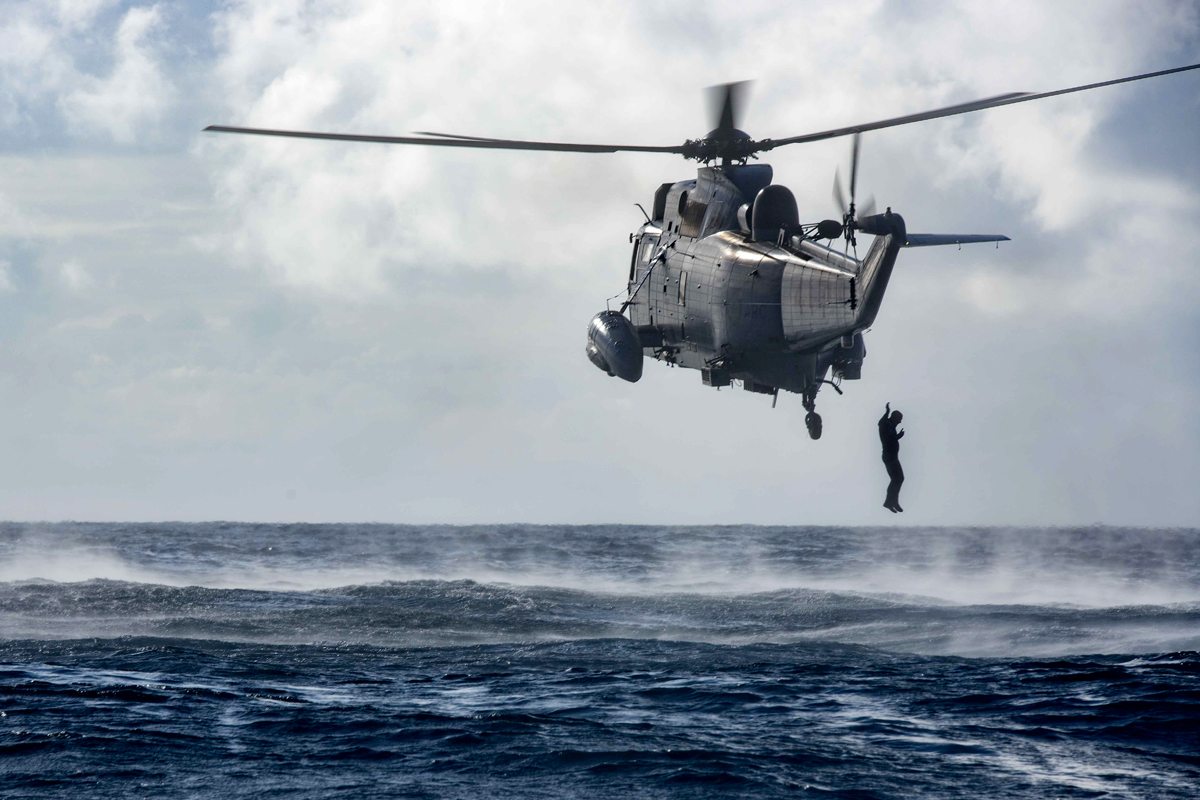Farewell to the King!
By Lookout on Oct 05, 2018 with Comments 2
Col (Retired) Ian Lightbody, Sea King Retirement Committee Chair ~
This year will see the retirement of the longest-serving Canadian combat aircraft – the Sea King. Originally delivered in August 1963 to then HMCS Shearwater, just outside of Halifax, NS, it will finish its service to Canada at the end of this year in Patricia Bay, just outside of Victoria, B.C.
Over its 55 years of employment in Canada, the Sea King has served with multiple services and has changed significantly from its initial 1963 configuration.
Originally procured by the Royal Canadian Navy (RCN) to operate from the aircraft carrier HMCS Bonaventure for Anti-Submarine Warfare (ASW) roles, it was on the leading edge of rotary wing technology at the time with two turbine engines and the then revolutionary capability to automatically transition to a hover with the push of a button. This allowed a great leap in night and all-weather operations permitting anti-submarine searches with an active dipping sonar. Additionally, the automatic transition equipment permitted search and rescue operations in bad weather.
The Sea King initially flew from the aircraft carrier. At the same time, work had begun on a highly innovative marriage of a medium-sized helicopter with an escort-sized warship.
The development of the Helicopter Haul-down and Rapid Securing Device, otherwise known as the Beartrap, allowed the Sea King to continue work on the front lines of the Cold War as one of the principal Canadian contributions to alliance Anti-Submarine Warfare efforts at sea following the retirement of Bonaventure.
Following the end of the Cold War, the Sea King changed with the times. After the invasion of Kuwait by Iraq in 1990, the Sea King was modified from an obsolescent ASW platform to a multi-mission helicopter with an emphasis on surface surveillance and control. The addition of a Forward Looking Infra-Red sensor, a door mounted machine-gun and infra-red anti-missile defences opened the door to expanding its presence in roles that weren’t emphasized during the Cold War.
A decade later, the Sea King reached a new peak of deployed operational activity after the attacks on the United States on Sept. 11, 2001. For example, in 2010-2011 the Sea King was deployed in combat operations off Libya, humanitarian relief operations in Newfoundland and after the Haiti earthquake and domestic security operations in the Olympics and the Toronto G7/G20 where the Sea King performed air intercept operations.
Through its life of service to Canada, the common thread has been the highly professional people who know and love the Sea King and kept it flying in some of the harshest environments in the world – at sea, on small ships, far away from any support. That an aircraft which was so maligned in the press could elicit such fierce loyalty was puzzling to many. Part of it may be that, in spite of its limitations, the Sea King remained operationally relevant up to and through 2018, the year of its retirement. As we enter the last half of 2018, the Sea King is sprinting to the finish with a final NATO deployment completed in July and support to the BC government’s response to its second year of devastating wildfires.
While there is no doubt that the Sea King’s retirement is long overdue, it will be a bittersweet moment for many.
The east coast ceased Sea King operations early in 2018 and in August the Shearwater Aviation Museum inducted two Sea Kings into its inventory – one in the original RCN configuration and one in the final configuration.
On Dec. 1 at Patricia Bay, a parade, fly past and gala dinner will take place to honour the aircraft and the people that have served Canada for 55 years.
For those who wish to help celebrate its service and retirement, please go to www.skr18.ca for details.
Filed Under: Top Stories
About the Author:







My father was in the Navy, on the HMCS Bonaventure, and worked on Sea Kings for most of his Naval career. Sea Kings were such a big part of his life. I know we would be there for the Sea King retirement in Esquimalt, if civilians are allowed to attend 🙂
We are civilians but we absolutely loved the Sea Kings. If civilians are allowed to attend we would love to come.
Thank You.